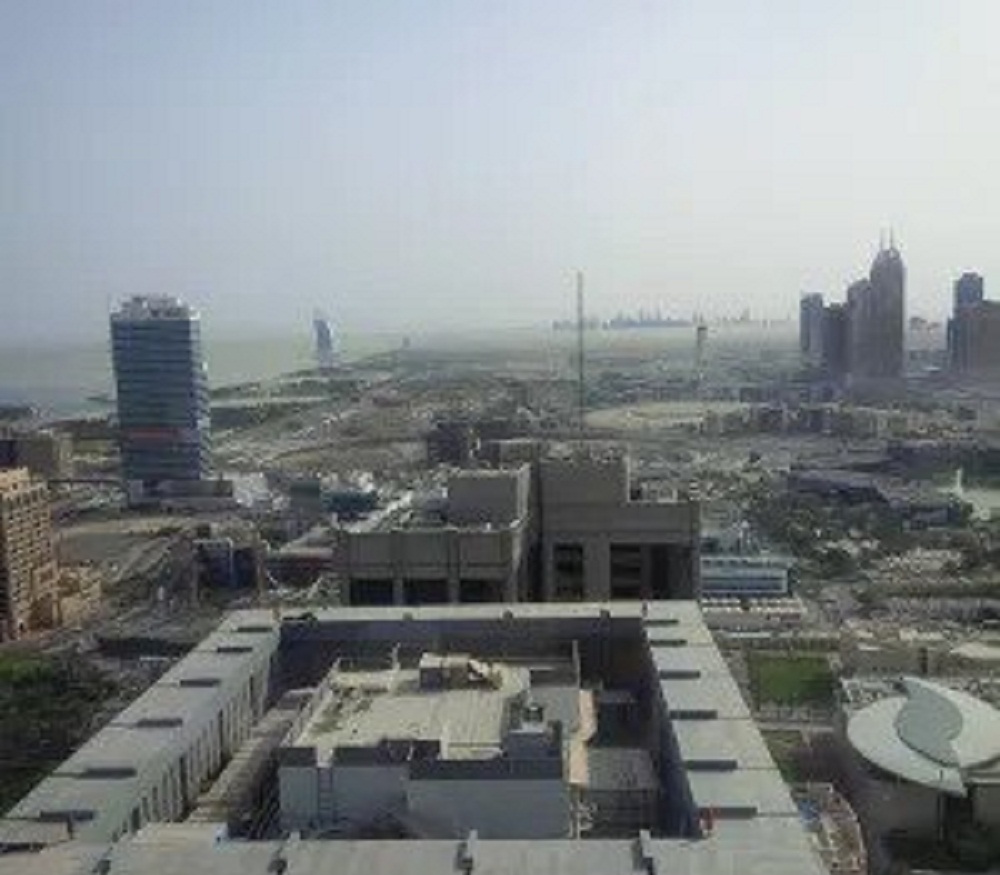The current main concerns with air quality in Abu Dhabi are the high ambient concentrations of particulate matter (PM10) and ground level ozone (O3)… Abu Dhabi’s annual average concentrations of PM10 were seven times higher than the World Health Organization (WHO) guideline of 20µg/m3 with peaks during dust storms reaching 14 , times the guideline. The main contributors for high PM10 levels are natural sources, transportation and combustion processes
Source: Enhancing Air Quality in Abu Dhabi, 2014 – EAD
In 2008, The Environment Agency Abu Dhabi (EAD) sponsored a study led by the University of North Carolina to identify the top environmental public health risks in the UAE. Outdoor air quality was “easily the greatest threat“, primarily due to high levels of particulate matter (PM) and ground-level ozone (O3).
The study informed the development of a National Strategy and Action Plan for Environmental Health (2010) which set out actions and indicators for addressing the key risks identified. Five years later, how are we doing?
It can be difficult to tell as there is little published data on air quality in the UAE, or anywhere else in the Arab world for that matter (I would love to be corrected on this!).

The good news is that there is definitely a wider air quality monitoring network now, particularly in Abu Dhabi. We are also now measuring more parameters, including the fine particulate matter (PM2.5), which are particles of diameter up to 25 microns. Given their smaller size (compared to PM10), PM2.5 can travel further into the human respiratory system and thus are a stronger risk factor for mortality. In other words, PM2.5 is more dangerous to human health.
More importantly, PM2.5 is primarily caused by human activities (e.g., transport and industrial activities). This is the case generally and has been shown to be the case in the UAE, where 54% – 67% of PM2.5 in Abu Dhabi is thought to come from man-made sources. That’s right: man-made sources, not sand storms.
Air Quality Index is identified as one of the KPIs in the recently released UAE Vision 2021. Notably, the index does not take into account particulate matter but does include ozone. There has also been a recent announcement about a national air quality monitoring network, which should provide more consistent data across the country.
Outside the UAE, there are a number of air quality monitoring and research projects underway in the region (e.g., Doha, Riyadh, Kuwait, Beirut). Many of these are linked to prestigious academic institutions and will hopefully provide more high-quality scientific data and analysis specific to the regional context.
Nevertheless, there is still a need for local and national authorities to cooperate and invest in air quality monitoring and reporting. The South Coast Air Quality Management District (AQMD) in Southern California provides an excellent example of a government authority that has and continues to successfully tackle air pollution in urban areas and provide relevant data and health advisories to the public.
Air quality is the number one environmental health risk in the UAE. Let us not hide our heads in the dust. Let us address the issue proactively and pragmatically.

